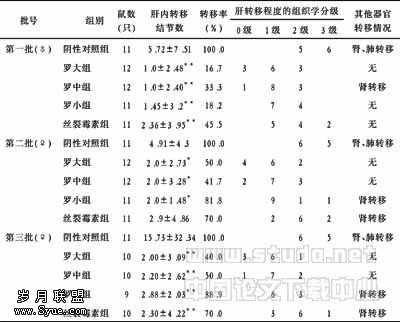颈髓损伤外科治疗进展
作者:俞锦清 谢丽丽 陈智能
【关键词】 颈髓
具有分化为神经元、星形胶质细胞和少突胶质细胞的潜能,并可进行自我更新,并促进损伤脊髓修复[16]。在体外培养中加入适当的生长因子或基质后,NSCs可分化为神经元和胶质细胞;移植到CNS后,亦可分化为神经细胞并与宿主细胞间形成功能性突触[17],移植到损伤的脊髓可以保护脊髓[18]。(2)嗅鞘细胞(Olfactory ensheathing cells, OECs):在众多促使损伤轴突修复、再生和功能恢复的方法中,嗅鞘细胞移植被认为是脊髓损伤最有前景的方法之一[19]。OEC,起源于嗅基底膜,分布在嗅球、嗅神经并可伴随嗅束迁徙入脑,可以穿越外周神经/中枢神经屏障,能产生维持神经元存活和轴突延长的神经营养因子及神经突促进因子、胶质细胞源性神经营养因子等,在其膜上表达出很多与细胞黏合和轴突生长相关的分子和促进神经生长因素的分子,OECs移植到损伤的脊髓内时,OECs和宿主胶质细胞巧妙地一起作用,创造一个利于减轻局部损害的环境,同时能促进多种轴突的再生反应,并能减少胶质瘢痕的形成,发挥对损伤脊髓神经元的营养支持和保护及促进轴突再生和延长的作用。在神经脱髓鞘的情况下,嗅鞘细胞能帮助神经髓鞘化和加速神经电生理传导速度,但它的迁移能力和修复损伤的能力均十分有限[20]。 (3)胚胎干细胞(embryonic stem cells, ESCs):ESCs是一类具有发育全能性且可在未分化状态下无限增殖的细胞。在适当的培养条件下,这些细胞可以分化为各种神经细胞移植后细胞在脊髓空洞中生长、增殖并向外迁移,分化为少突胶质细胞、神经元(10%)星形胶质细胞,表达髓磷脂、髓磷脂碱性蛋白细胞外基质成分纤维连接素和层粘连蛋白,使得轴髓鞘形成,提高运动功能[21]。(4)雪旺氏细胞(Schwann cells, SCs ): SCs又称神经膜细胞,是周围神经的胶质细胞,可通过支架作用、分泌神经营养因子及促进轴突生长、迁移的分子而达到修复神经系统的作用。SCs能够使培养的脊髓运动神经元的突触增加9倍,自发突触活动增加数百倍,表明SCs可促进细胞轴突的生长[22]。然而SCs在CNS内可与星形胶质细胞相互抵制,增加星形胶质细胞的瘢痕作用,阻碍脊髓再生[23]。虽然SCs移植可提供适合轴突再生的微环境,但移植的SCs在局部的迁移距离非常有限,疗效也缺乏稳定性,有待于进一步的客观评价。Schwann细胞最有希望的用途可能是它能为再生的轴突提供一个允许的、支持性的环境,联合应用其它一些治疗措施能够诱导轴突在宿主内有较长距离的再生,移植基因修饰产生神经营养因子BDNF和NT3的Schwann细胞时,其再生效果更为明显[24]。(5)骨髓间充质干细胞(mesenchymal stem cell,MSCs):MSCs存在于骨髓中的非造血细胞,是一种成体干细胞,能诱导成为神经元和胶质细胞,能分泌神经营养因子、细胞因子和其他生物活性因子。它们在培养中呈贴壁生长,是一类易于扩增,并具有良好可塑性的成体干细胞。MSCs移植治疗脊髓损伤成为研究的热点,移植到脊髓后能减轻细胞凋亡,减少脊髓空洞,促进运动功能的恢复, 可以改善脊髓神经功能和分化形成神经细胞和基质,促进神经轴突重建[25,26],MSCs能够在脑内中枢神经组织内存活并进行迁移分化,在体外使用不同的诱导剂能将培养增殖的MSCs诱导分化为神经细胞和胶质细胞,表明MSCs在细胞诱导作用下具有分化为神经细胞的潜能并有望应用于临床治疗颈髓损伤等中枢神经系统疾病[27,28]。(6)脐带血干细胞(Cord blood stem cell,CBSC):脐血中的部分细胞在体外培养或体内移植后可分化为神经细胞,并可促进神经损伤动物的功能恢复。有证据表明,脐血细胞分化、替代损伤的神经元可能不是损伤修复的唯一机制,还可能通过分泌营养因子和调节自体免疫过程来实现神经保护功能。
基因治疗 治疗急性脊髓损伤的关键是中枢神经再生,合适的微环境可以促进中枢神经再生。基因治疗急性脊髓损伤的基本原理是利用转基因技术(物理、化学或生物),将某种特定的目的基因(重组DNA)转移到体内,使其在体内表达的基因产物发挥生物活性。基因治疗可将神经营养因子基因导入体内, 神经营养因子在促进脊髓损伤恢复中起重要作用,可以保护神经细胞减少其损失,促进髓鞘形成和轴突再生[29,30]。由于神经营养因子是生物大分子,难以通过血脑屏障,而且全身使用效率低。基因治疗包括invivo和exvixo等方式,exvixo同时具有细胞移植和基因治疗的双重优点[31]。将目标基因导入到细胞有物理化学方法(如阳离子脂质体等)和生物方法。用阳离子脂质体等可以直接将基因转到体内(invivo),但是转染的效率低,基因的表达是暂时的。病毒载体及其携带性治疗因子是主要的方向,现在常用的病毒载体有单纯疱疹病毒(HSV)、腺病毒(AdV)、腺相关病毒(AAV)和慢病毒(LV)载体。目前仍停留在实验阶段,进入临床研究还有很长的探索过程。
颈髓损伤是高位脊髓损伤的范畴,其致残及致死率较高,积极的外科手术治疗仍是目前临床治疗的主攻方向。手术时机的选择以及手术方式的采用须因人、因地、因时把握,无统一的标准,也无大样本的循证医学依据可以。然而选择尽早时机并在患者尽可能好的身体状况下开展较少创伤的手术治疗,达到彻底减压以及脊髓内外减压特别是硬脊膜内外的减压和一定的脊柱稳定性,恢复脊柱序列是必要的,是否彻底减压是外科治疗的要点。细胞移植作为神经细胞再生和补充,神经基质和微环境调节方面的作用,目前已经在临床和基础研究中得以证实,然而移植类型、移植方式、移植数量、移植的时间窗、移植细胞的定向调控仍然需要探索和进一步研究;基因治疗的安全性问题、基因表达的时间、空间调控、多种因子的协调和序贯作用等仍是研究的焦点,目前仍然停留在基础研究阶段,其临床运用还有一段距离,但是作为颈髓损伤的辅助治疗,以及颈髓损伤治疗的突破点和新的切入点未来将会发挥重要作用。
【参考】
1 Chen TY, Dickman CA, Eleraky M. The role of decompression for acute incomplete cervical spinal cord injury in cervical spondylosis. Spine, 1998,23(22):2398~2403.
2 Hendery GW,Wolfson AB,Mower WR,et al. Spinal cord injury without radiographic abnormality: results of the National Emergency X-Radiography Utilization Study in blunt cervical trauma. J Trauma, 2002 ,53(1):1~4.
3 Vaccaro AR, Daugherty RJ, Sheehan TP, et al.Neurologic outcome of early versus late surgery for cervical spinal cord injury. Spine, 1997,22:2609~2613.
4 McKinley W, Meade MA, Kirshblum S, et al. Outcomes of early surgical management versus late or no surgical intervention after acute spinal cord injury. Arch Phys Med Rehabi,2004,85(11):1818~1825.
5 Aebi M,Mohler J,Zach GA,et al.Indication,surgical technique,andresults of 100 surgically treated fractures and fracture dislocations of the cervical spine.Clin Orthop,1986,203:244~257.
6 Mirza SK, Krengel WF 3rd, Chapman JR,et al.Early versus delayed surgery for acute cervical spinal cord injury. Clin Orthop Relat Res,1999,359:104~114.
7 王友臣,彭建宇,许坤,等.急性颈髓损伤后脊髓细胞能量代谢的变化.河北医科大学学报,2005,26(2):91~92.
8 Papdoulos SM,Selden NR,Quint DJ,et al.Immediatespcord decompression for cervical spinal cord injury :feasibility outcom. Trauma , 2002,52(2):323~333.
9 Hakalo J, Wronski J.Importance of early operative decompression of spinal cord after cervical spine injuries. Neurol Neurochir Pol, 2004,38(3):183~188.
10 Moreland DB, Asch HL, Clabeaux DE, et al.Anterior cervical discectomy and fusion with implantable titanium cage: initial impressions patient ouucomes and comparison to fusion with allograft. Spine J, 2004 ,4(2):184~191.
11 Thalgott JS, Xiongsheng C, Giuffre JM.Single stage anterior cervical reconstruction with titanium mesh cages, local bone graft, and anterior plating. Spine J, 2003,3(4):294~300.
12 Kanayama M, Hashimoto T, Shigenobu K, et al. Pitfalls of anterior cervical fusion using titanium mesh and local autograft J. Spinal Disord Tech, 2003,16(6):513~518.
13 Yoshimoto H, Sato S, Hyakumachi T, et al. Spinal reconstruction using a cervical pedicle screw system. Clin Orthop Relat Res, 2005 ,431:111~119.
14 Matsumura A,Yanaka K,Akutsu H,et al.Combined laminoplasty with posterior lateral mass plate for unstable spondylotic cervical canal stenosis-technical note .Neurol Med Chir (Tokyo),2003,43(10):514~519.
15 Abumi K, Shono Y, Ito M, et al. Complications of pedicle screw fixation in reconstructive surgery of the cervical spine. Spine, 2000 , 25(8):962~969.
16 Lu P, Jones LL, Snyder EY, et al. Neural stem cells constitutively secrete neurotrophic factors and promote extensive host axonal growth after spinal cord injury. Exp Neurol, 2003 ,181(2):115~129.
17 Stenfeld T, Caldwell MA, Prowse KR, et al. Human neutral precursor cells express low levels of telomerase in vitro and show diminishing cell proliferation with extensive axonal outgrowth following transplantation. Exp Neural, 2000, 164(1):215~226.
18 Llado J, Haenggeli C, Maragakis NJ, et al. Neural stem cells protect against glutamate-induced excitotoxicity and promote survival of injured motor neurons through the secretion of neurotrophic factors.Mol Cell Neurosci, 2004, 27(3):322~331.
19 刘祥胜,刘开俊,郑国寿.嗅鞘细胞移植与脊髓再生修复.中华创伤杂志,2004,20(11):699~701.
20 Lee IH, Bulte JW,Schweinhardt P, et al. In vivo magnetic resonance tracking of olfactory ensheathing glia grafted into the rat spinal cord. Exp Neurol, 2004,187(2):509~516.
21 Lang KJ, Rathjen J, Vassilieva S, et al. Differentiation of embryonic stem cells to a neural fate: a route to rebuilding the nervous system? J Neurosci Res, 2004,76(2) :184~192.
22 Ullian EM, Harris BT, Wu A, et al. Schwann cells and astrocytes induce synapse formation by spinal motor neurons in culture. Molecular and Cellular Neuroscience, 2004, 25(2) :241~251.
23 Lakatos A, Franklin III, Barnett SC. Olfactory ensheathing cells and Schwann cells differ in their in vitro interactions with astrocytes. Glia,2000,32(3):214~225.
24 Tobias CA,Shumsky JS,Shibata M,et al.Delayed grafting of BDNF and NT3 producing fibroblasts into the injured spinal cord stimulate ssprouting,partially rescues axotomizedred nucleus neurons from loss and atrophy, and provides limite dregeneration.Exp Neurol,2003,184(1): 97~113.
25 Lu P, Jones LL, Tuszynski MH.BDNF-expressing marrow stromal cells support extensive axonal growth at sites of spinal cord injury. Exp Neurol,2005,191(2):344~360.
26 Satake K, Lou J, Lenke LG. Migration of mesenchymal stem cells through cerebrospinal fluid into injured spinal cord tissue. Spine,2004, 29(18):1971~1979.
27 Bianco P,Genron Robey P.Marrows tromal stem cells.Clin Invest,2000, 105(12):1663~1668.
28 Hofstetter CP,Sshwarz EJ,Hess D.Marrows tromal cells form guidings trands in the injuried spinal cord and promote recovovery.Pnas,2002, 99(4) :2199~2204.
29 Boulis NM, Bhatia V, Brindle TI, et al. Adenoviral nerve growth factor and beta-galactosidase transfer to spinal cord: a behavioral and histological analysis. J Neurosurg, 1999 ,90(1):99~108.
30 Tai MH, Cheng H, Wu JP, et al. Gene transfer of glial cell line-derived neurotrophic factor promotes functional recovery following spinal cord contusion. Exp Neurol, 2003, 183(2):508~515.
31 Ruitenberg MJ, Plant GW, Hamers FP, et al.Ex vivo adenoviral vector-mediated neurotrophin gene transfer to olfactory ensheathing glia: effects on rubrospinal tract regeneration, lesion size, and functional recovery after implantation in the injured rat spinal cord. J Neurosci, 2003, 23:7045~7058.











